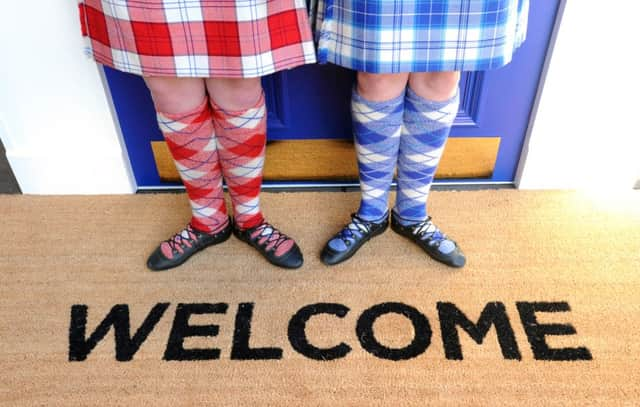Brian Ferguson: 2016 could be a great year for festivals


The launch of Scotland’s first ever nationwide celebration of architecture and design was the latest chapter in the enduring legacy of a campaign to celebrate the work of Robert Burns.
It is well over a decade since then First Minister Jack McConnell instigated the idea of using the 250th anniversary of Burns’ birth in 2009 to woo expats back to Scotland.
Advertisement
Hide AdAdvertisement
Hide AdBy the time the Year of Homecoming, as it was to become known, came around Mr McConnell had been ousted from office. However new first minister Alex Salmond’s SNP administration not only fully embraced what was to become the nation’s biggest ever tourism campaign, but dreamt up the idea of a series of annual initiatives to galvanise the industry.
These “themed years,” as the Scottish Government likes to call them, have had varying levels of success.
The 2009 Homecoming, which did much to raise the profile of Burns, will forever be tainted by the debacle over the signature clan gathering in Edinburgh that left more than 100 private businesses seriously out of pocket when its organising company went bust.
Despite those much-publicised troubles, and concerns by Mr McConnell and other politicians that the Burns anniversary had been hijacked to help build support for Scottish independence, a second Homecoming was staged last year to coincide with the Ryder Cup and Commonwealth Games.
Although funding was secured for other notable events, like the launch of the iconic Kelpies sculptures in Falkirk and the 50th anniversary of the Forth Road Bridge, there was a lingering suspicion public money was being cleverly used to bolster the independence cause rather than attract extra overseas visitors. Most controversy centred around the 700th anniversary of the Battle of Bannockburn, with a £400,000 subsidy for a festival that the National Trust for Scotland, which maintains the battlefield site, washed its hands of and was scaled back due to poor ticket sales.
Other themed years have faltered badly, especially the culture one in 2012, which was overshadowed by a rebellion from artists over the new quango Creative Scotland. However the separate years devoted to food and drink have done much to encourage the development of new events, raise industry standards and promote independent businesses.
Even though December is looming, it is perhaps premature to assess how the Year of Innovation, Architecture and Design – “YIAD” for short, I am informed – is shaping up.
For some reason, details of its major element, a Festival of Architecture with more than 400 events, are still under wraps. However there is plenty to get excited about in the line-up that is confirmed.
Advertisement
Hide AdAdvertisement
Hide AdHighlights include special events to mark both the rebirth of St Peter’s Seminary, in Argyll, and the opening of new fashion and design galleries at the National Museum of Scotland.
Also promised is the biggest ever celebration of Harris Tweed, fashion shows in the great hall of Stirling Castle, and pop-up design expos.
The debate over Edinburgh’s world heritage site also provides an intriguing backdrop to the many events which will be happening in the capital.
If YIAD can remain free of political wrangling, and a proper promotional campaign can click into place, it could just be one of the defining features of Scotland in 2016.